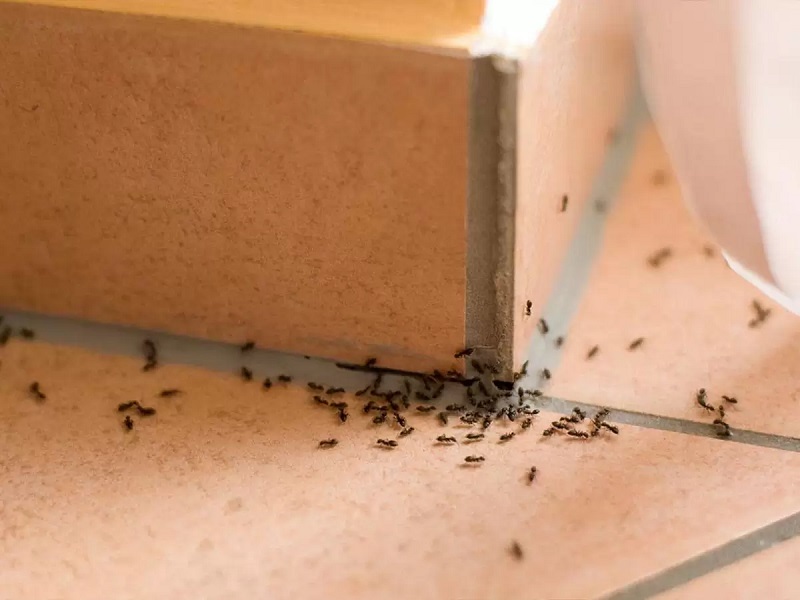6 Things Attracting Pests to Your Home

No matter how clean and tidy you keep your home, pests always find their way inside. From pesky ants to creepy-crawly spiders, dealing with these unwelcome guests can be frustrating. But have you ever wondered what’s attracting pests to your home in the first place?
In this article, we’ll explore six common things that could be drawing pests to your doorstep and provide tips on how to prevent them from entering your home. So grab a cup of coffee and get ready to learn how to make your home less appealing to pests!
-
Moisture
Many pests, including cockroaches, termites, and rodents, are attracted to moisture. Leaky pipes, clogged gutters, and standing water in your yard or basement can create an ideal environment for these pests to thrive.
Solution
To reduce the risk of moisture-related pest problems, promptly address any leaks or water damage. Keep gutters clean and in good repair, and ensure that your yard is properly graded to prevent water from pooling.
If you have a basement or crawl space, consider installing a dehumidifier to reduce moisture levels and discourage pests. You can also seek local pest control assistance for severe moisture-related pest problems. Taking these steps reduces the risk of pest infestations and promotes a healthy living environment for you and your family.
-
Food
Pests are always on the hunt for their next meal, and your home may provide them with an all-you-can-eat buffet. Crumbs on the floor, open food containers, and improperly stored garbage can attract pests like ants, cockroaches, and rodents.
Solution
To reduce the risk of food-related pest problems, clean up spills and crumbs immediately, store food in airtight containers, and keep your garbage cans tightly sealed. Don’t forget to clean your pet’s food and water bowls regularly, as these can also attract pests.
-
Clutter
Pests love to hide in cluttered areas where they can remain unseen and undisturbed. Piles of laundry, stacks of papers, and boxes stored in the attic or basement can all provide ideal hiding places for pests like rodents, spiders, and cockroaches.
Solution
Keep your home tidy and organized to reduce the risk of clutter-related pest problems. Donate or discard items you no longer need, and store the remaining items in sealed containers or on shelves. Regularly cleaning out your closets and storage areas can also help keep pests at bay.
-
Cracks and Holes
Even the tiniest crack or hole in your home’s exterior can provide an entry point for pests. Mice can squeeze through openings as small as a dime, while ants can enter through gaps as small as 1/16th of an inch.
Solution
To reduce the risk of pest problems related to cracks and holes, be sure to seal any openings you find. Use caulk to close gaps around windows and doors and weatherstripping to seal gaps under doors.
Install screens on windows and doors to prevent pests from entering, and consider using door sweeps to seal gaps at the bottom of exterior doors.
-
Plants and Trees
While plants and trees can add beauty and shade to your yard, they can also attract pests like rodents and insects. Overhanging branches and vines can provide a highway for pests to enter your home, while dense foliage can provide ideal hiding places.
Solution
To reduce the risk of plant and tree-related pest problems, be sure to keep foliage trimmed back from your home’s exterior. Remove dead or dying plants, as these can attract pests like termites and carpenter ants. If you’re planting new trees or shrubs, be sure to choose varieties that are less likely to attract pests.
-
Light
While many pests are active at night, they can also be attracted to light sources. Outdoor lights, in particular, can draw pests like moths and beetles into your home.
Solution
To reduce the risk of light-related pest problems, be sure to use yellow or amber bulbs instead of white or blue. These colors are less attractive to pests, making them less likely to swarm around your home.
Consider using motion-activated lights instead of leaving outdoor lights on all night, as this can help reduce the number of pests attracted to your home.
Conclusion
By identifying and addressing the factors that attract pests to your home, you can significantly reduce the likelihood of infestations and keep your living space comfortable and pest-free.
From addressing moisture issues to properly storing food, implementing simple preventative measures can make a big difference in keeping your home pest-free.
Additionally, seeking professional help from a pest control service can help you identify and treat any existing pest problems and provide ongoing maintenance to prevent future infestations.